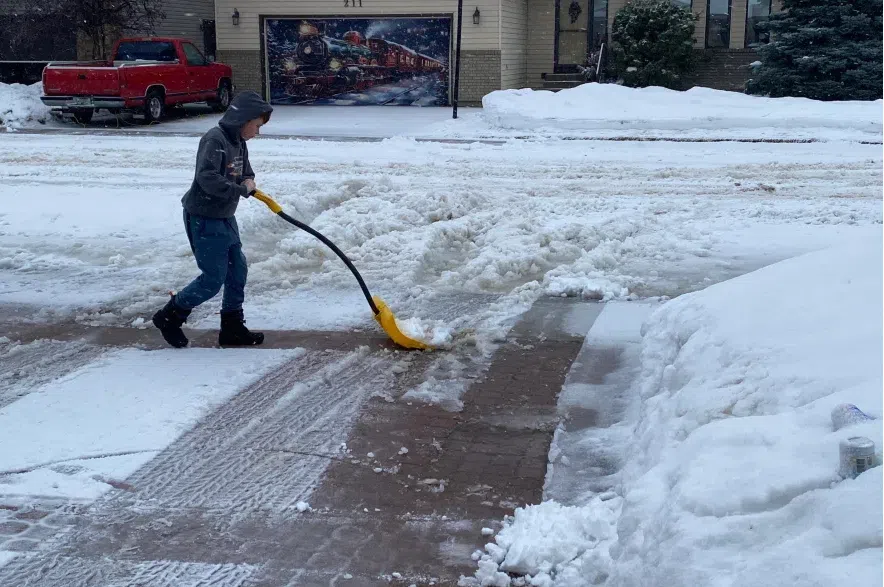Just when we hoped it was gone for good, snow is coming back to Saskatchewan.
Environment Canada issued a snowfall warning on Monday afternoon for parts of eastern Saskatchewan predicting around 10 to 20 cm of snow beginning Tuesday morning and then intensifying through the afternoon and evening, before tapering off on Wednesday.
Read more:
- Who’s running in my riding? Saskatchewan’s federal election candidates
- Canada Votes 2025: Your trusted source for election coverage
“We do not like issuing snowfall warnings in late April. It’s not fun,” said Shannon Moodie, a meteorologist with Environment Canada.
“We have a system that’s moving through the U.S., and that’s going to bring some precipitation through much of southern Saskatchewan and into Manitoba, but unfortunately for eastern Saskatchewan and western Manitoba, we’ve got a good amount of cold air coming aloft that’s going to transition that rain to snow,” she said.
Moodie said the precipitation will be a mixed bag depending on where you live.
“Some parts of the region maybe won’t see as much, but Yorkton is kind of like in the centre of it, and as you go towards the Manitoba border, certainly over higher terrain, you’re going to see more,” said Moodie.
She warned the upcoming weather could make roads dangerous.
“It’s going to be quite hazardous — the snow is going to be heavy, it’s going to be wet … it’s going to be reducing visibility,” said Moodie.
The weather is expected to warm up again by Tuesday, which should help melt a lot of that snow buildup.
How to stay safe on snowy roads
Travelling safely during winter driving conditions requires additional attention and skill, police said. When driving on slippery and /or snow-covered surfaces or with reduced visibility, motorists should:
Slow down: Travel at a speed that allows you to keep control of your vehicle, even if this is slower than the speed limit.
Make smooth manoeuvres: Make soft, fluid movements when steering, accelerating, and braking.
Refrain from using cruise control: If you go into a skid while using cruise control, your vehicle will continue to accelerate and the tires will spin, preventing you from stopping your vehicle.
Maintain a safe following distance: Leave additional space between your vehicle and the vehicle in front of you, allowing for sudden stops.
Stay on main roads: Main highways are first to be cleared and travelling on them increases your visibility if you get stranded.
Use your headlights: If it is snowing or raining, drive with your headlights on at all times.
Read more:











